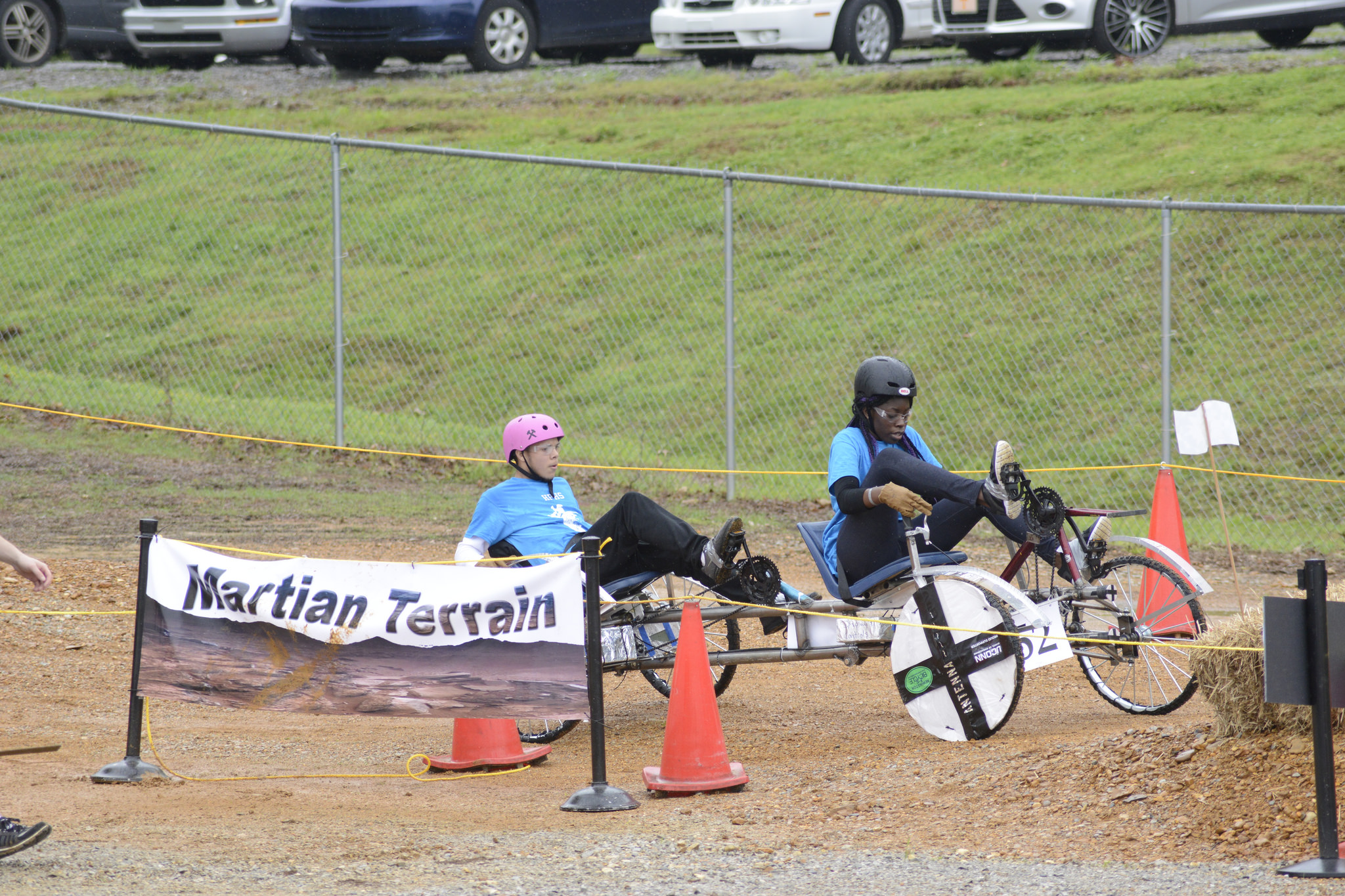Astronauts will spend more than a year on Mars, as the planets move into positions for the quickest trip back home. Explorers won’t want to be limited to the distance they can walk in spacesuits while carrying gear, so they’ll traverse the Red Planet in some sort of tough and reliable rover — the ultimate off-road vehicle. In “The Martian,” stranded astronaut Mark Watney customizes a rover to play a crucial role in his survival.

NASA’s Marshall Space Flight Center in Huntsville, Alabama, has experience with extraterrestrial transport. In addition to designing the Saturn V rocket that launched humans on journeys to the moon, Marshall was responsible for the design, development and testing of the Lunar Roving Vehicle used during the Apollo 15, 16 and 17 missions.
The lunar rover was the original inspiration for NASA and Marshall’s annual high-school and college student engineering contest — the Human Exploration Rover Challenge. Human-powered rovers must be designed and built to specific standards, then raced against the clock on a more than half-mile course at the U.S. Space & Rocket Center in Huntsville. Today, the course has obstacles and features that simulate the Martian landscape.
“We took imaging from the Mars Reconnaissance Orbiter and had scale models of real-life Martian terrain made for the rover challenge,” said Dr. Frank Six, Marshall university affairs officer and one of the race creators and course designers. “Mars terrain and obstacles will be a part of the course again in 2016.”
The course is tough on the rovers and tough on the students, who must wield problem-solving skills and on-the-fly engineering for their teams to complete the challenge. Sound familiar?


























